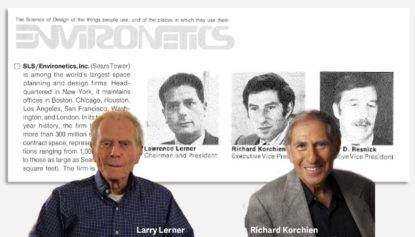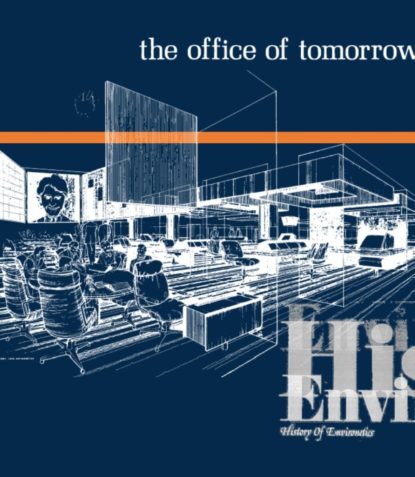
Share this
History of ENV
We thought our current company rebranding as ENV would be the perfect time to share some of the highlights from our vast company history spanning over 70 years.
In 1946, Environetics was formed (as Michael Saphier Associates) with a clear objective to investigate and create new methods of design within what was then the comparatively new discipline of office planning, as described by Lawrence Lerner. With the rapid advance in business systems and the expanding demand for companies to administer the increases in world trade, we recognized that traditional methods of designing offices would not be able to meet this new challenge. A completely new design methodology was developed for the field we now refer to as space planning and office design.
Around 1948 Michael Saphier Associates became Saphier, Lerner Schindler, led by Michael Saphier, Lawrence Lerner and Bud Schindler. During the following decade, our organization became recognized as the leader in this new field. The excitement generated during those first ten years attracted many key executives. From the inception until the present there has been a constant striving for perfection and the objective to: “design the things that people use, as well as the places in which they use them.”
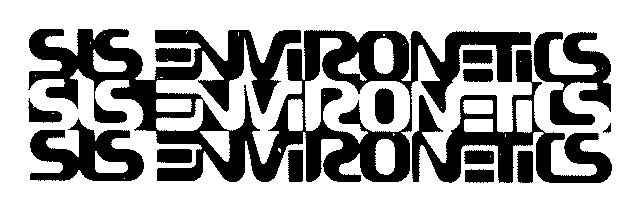
In 1960, the name of the firm became SLS, and shortly thereafter SLS/Environetics. The Environetics name came from the mashing of interior environments, where we practice our skills, and cybernetics, the study of human behavior established in the mid 1940s by Dr. Nobert Wiener. Around 1962, SLS was dropped and Environetics remained.
The Environetics name came from the mashing of interior environments, where we practice our skills, and cybernetics, the study of human behavior.
From the early 1960s, what had been an essentially American philosophy of design began to attract the interest of companies worldwide. Within a relatively short period of time, Environetics’ philosophy became an international concept. During this period NASA retained us to design an office complex for the Goddard Space Flight Center. As the project developed we came into contact with the computer technology utilized to interpret data supplied from satellites. This was to be the spark that led to the creation of the first computer graphics system used in interior design.
In 1969, we were retained as the space planning and design consultants for Sears Roebuck’s new office tower to be built in Chicago. Containing 4.4 million square feet and standing 110 stories high, it was the most outstanding and ambitious office design project of its time.
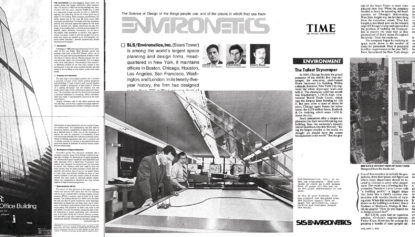
The beginning of the 1970s marked a development in the design field that brought experts and writers from all parts of the country to our New York office. After nine years of research, the first computer graphic system came into use in time to be used for the preparation of all working drawings for the Sears Tower project. Since its introduction, and after thousands of hours of further research and programming the system has emerged among the most sophisticated systems in use by the architectural profession anywhere in the world.
By the mid-1970s the first fully staffed overseas office was opened in London to design and plan the new headquarters for W.H. Smith & Son Ltd., the largest bookseller in the United Kingdom. The London office has since undertaken many innovative and major projects. In addition, offices were established in Mexico, Australia and Japan, along with new offices in many of the major U.S. cities, during the 1970s.
In 1978, the company’s architectural group was formed under the direction of Richard Korchien, AIA, to advance our design philosophy. The methods and systems that had been developed over a third of a century could now be used for the creation of structures. Our clients could now commission the creation of a total environment, knowing it would be functional, cost efficient, and aesthetically pleasing in every aspect.
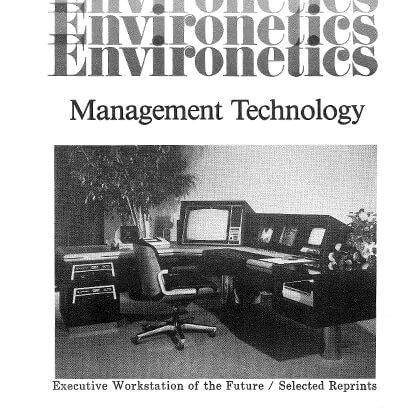
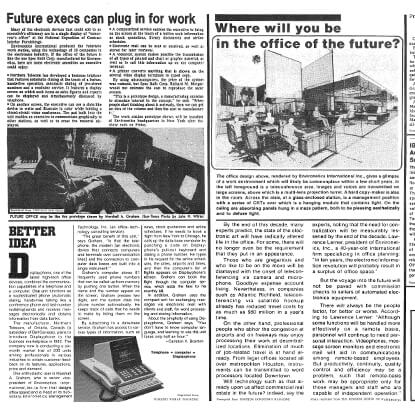
"Environetics International conceives paperless office in which employee comfort and productivity are stressed." CONTRACT / January 1982
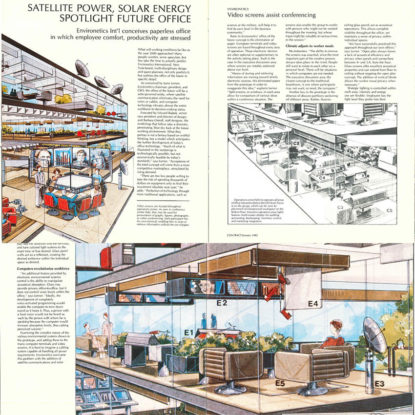
Through the 1980s and present, the company affected a number of mergers in the New York and Los Angeles offices. In 1988, a merger with ODA in New York, and in 1996 with Sasso Design Group in Los Angeles reinforced the management to ensure the philosophy and goals of the company. In the summer of 1998, the New York office completed a merger with A/R Architects. Additional mergers followed bringing into the fold offices in Englewood Cliffs, New Jersey and in Philadelphia. Along with these mergers there have been many strategic alliances established in major cities throughout the world.
With the advanced technologies created through the various mergers, our objective to investigate and create new methods of design will continue well into the future. Today, Environetics continues to provide professional services to our clients throughout the world. The experience that each principal and each staff member brings to the firm is unique in the interior design and architecture fields. As the world evolves, and as the practice of interior design and architecture evolves, so does ENVironetics to |E|N|V|. We will have the same passionate people with the same philosophy established in the 1940s by Lawrence Lerner, and the same passion to provide design leadership for our clients throughout the world.
